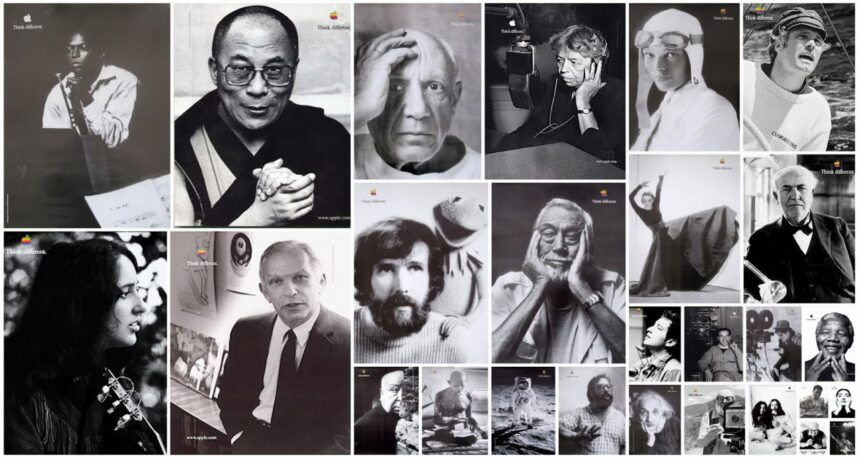“The future of communications is going to be working with leaders and organizations on their narrative, which is their message, reputation, and positioning, rather than exposure and publicity,” said Adam Mendelsohn, founder of Upland Workshop, in AXIOS’ report from Cannes.
Doesn’t your business deserve the kind of storytelling that quickly, clearly sets your business apart from all others based on its boldness, authenticity, personality and relevance?
Think about this iconic example from Apple:
“Here’s to the crazy ones, the misfits, the rebels, the troublemakers, the round pegs in the square holes… the ones who see things differently — they’re not fond of rules… You can quote them, disagree with them, glorify or vilify them, but the only thing you can’t do is ignore them because they change things… they push the human race forward, and while some may see them as the crazy ones, we see genius, because the ones who are crazy enough to think that they can change the world, are the ones who do.”
The ‘Think Different’ campaign is storytelling that offers a distinctive point of view, that makes you think, that draws you in and installs a baseline of deeper meaning. It is meant to inspire. What drives this narrative is a bold higher purpose and vision for what the brand’s business stands for. Operating with a strong strategic foundation opens the door to creating a more captivating story.
Here are six fundamentals to help direct your thinking on a better foundation for brand storytelling:
1. Start by refining your brand purpose and vision. This should be the litmus test for determining whether a topic is right for you.
2. Use brand archetype discovery and refresh to help guide your thinking on voice, tone, and manner of communication.
3. Build the story in layers of relevance to address the different objectives of various stakeholder audiences.
4. Express a clear point of view. Focus on values, issues, and cultural influence that matter to your community.
5. Make consumers the heroes of your story. It’s about them and not you or your company. Your role in the story is coach, educator, and enabler.
6. Use emotion and emotive language wherever possible to enhance audience engagement. People are feeling creatures who think, not the other way around.
Says Yvon Chouinard, the CEO and founder of Patagonia:
“It’s been nearly 50 years since we began our experiment in responsible business, and we are just getting started. If we have any hope of a thriving planet—much less a thriving business—50 years from now, it is going to take all of us doing what we can with the resources we have. This is another way we’ve found to do our part.
Despite its immensity, the Earth’s resources are not infinite, and it’s clear we’ve exceeded its limits. But it’s also resilient. We can save our planet if we commit to it.”
That message permeates every aspect and corner of Patagonia’s narrative and has helped make it one of the most respected brands anywhere. When you identify your “why” and work to extend that foundation throughout your brand narrative, you are in effect embedding the storytelling with consistency, resonance, meaning, and value.
Contributed to Branding Strategy Insider by Robert Wheatley, CEO of Chicago-based Emergent, The Healthy Living Agency.
At The Blake Project, we help clients worldwide, in all stages of development, define and articulate what makes them competitive and valuable. Please email us to learn how we can help you compete differently.
Branding Strategy Insider is a service of The Blake Project: A strategic brand consultancy specializing in Brand Research, Brand Strategy, Brand Growth and Brand Education
FREE Publications And Resources For Marketers
Post Views: 25










